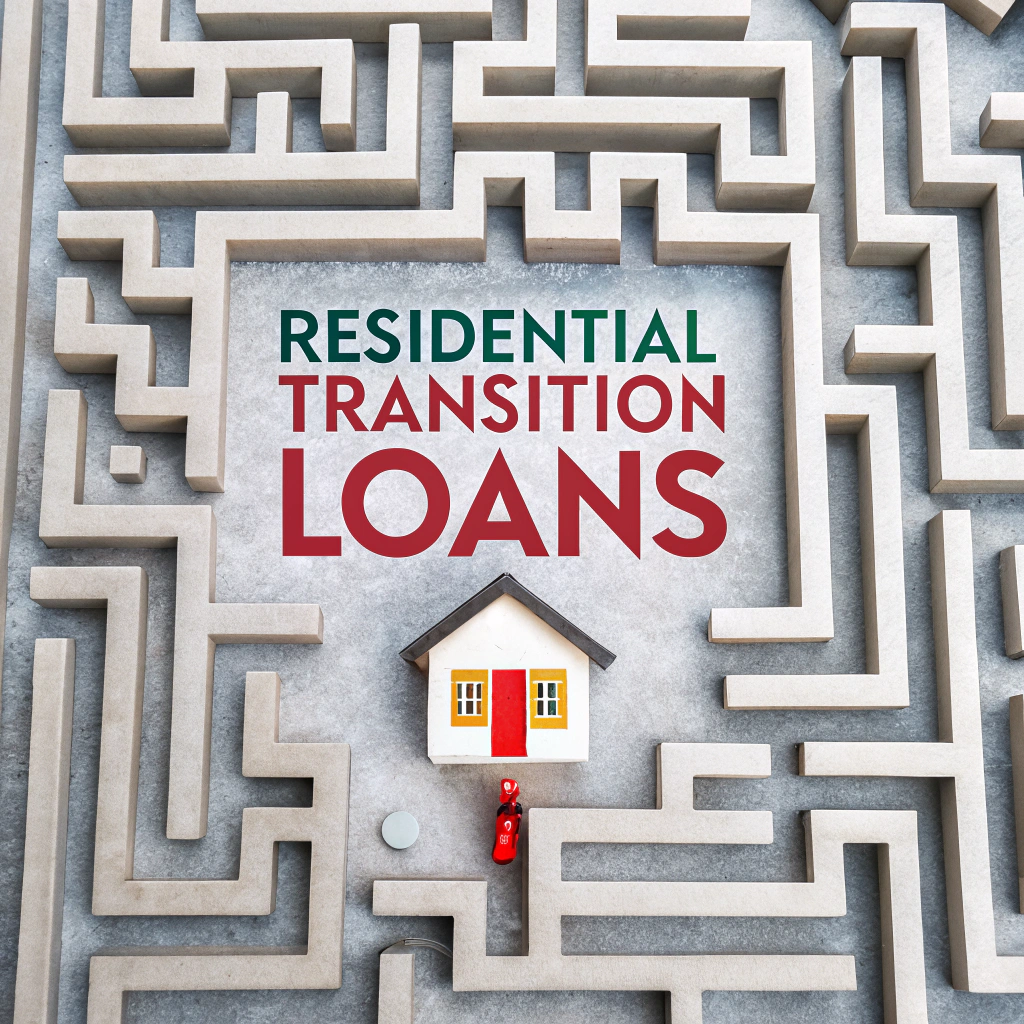*updated 4-10-25
Do you know the meaning of RTL? The definition is “residential transition loans” and large institutional players are coming into this growing investment space.
This new investing R.T.L. acronym is being popularized by real estate investors ranging from small investors fix-and-flippers to large institutional financing companies.
These lending products offered by financial services companies like CoreVest, Backflip, or Rain City Capital are crucial short-term financing options for real estate developers and investors. The RTL loans helps real estate investors looking to acquire, renovate, or construct residential properties, such as single-family homes or build a rental portfolio of homes.
These business purpose loans support projects in transition, whether it’s a fix-and-flip, a new construction home, a BRRRR method project popularized by Bigger Pockets or stabilizing a rental property.

We believe this burgeoning SFR investing theme will over the next decade become a trillion dollar asset class that large institutional players and capital markets can no longer ignore.
The investor demand for residential transitional loans and financing products focused on the residential housing market is still in its early stages.
Patrick Schultz discusses on YouTube the institutional march of the SFR real estate market towards a trillion dollar asset class.
What Are Residential Transition Loans?
Here’s an overview of how residential transition products work as compared to traditional loans. These are the factors to consider if you’re a real estate investor in the United States.
Residential transition loans are short-term loans intended for residential real estate investors who need financing to bridge the gap between property acquisition and long-term funding.
These loans are often used for fix-and-flip projects, renovation costs, or ground-up construction of homes and rental units, such as single-family rentals (SFR).
Unlike traditional mortgages, these flip loans come with higher interest rates due to the short-term nature of the investment and the perceived risk.
Private lenders and hard money lenders dominate this space, offering flexible loan amounts and structures to meet the needs of investors working with residential properties.
Types of Residential Transition Loans
Here are the most common types of residential transition loans:
Bridge Loans
A bridge loan provides immediate financing, allowing investors to purchase a property quickly before securing long-term funding or selling the property. These loans are common in competitive markets like New York and San Francisco, where fast action is critical.
Rehab Loans
For distressed properties that need significant repairs or renovations, rehab loans cover both the purchase price and the cost of the remodeling work needed to bring the property up to full housing market value.
Investors often use rehab loans to flip houses or renovate properties for rental housing or add to a property’s potential value through renovation.
Read about how rehab loans work on Reddit.
Construction Loans
These loans finance ground-up construction projects, typically involving new builds for single-family homes or multi-family units.
Construction loans are essential for investors looking to add to the existing property stock, especially in high-demand housing markets like Dallas, Houston TX, or properties in Fort Worth.
How Residential Transition Loans Work
Residential transition loans are short-term by design, typically lasting from six months to two years.
Due to shorter time frame, loan agreements tend to be more flexible than traditional mortgage loans, offering adjustable loan amounts based on the project’s scope and the property’s after-repair value (ARV).
Property investors can obtain these loans from a range of sources, including private lenders, hard money lenders like Backflip and institutional players like Genesis Capital and Toorak Capital Partners.

These RTL lenders focus on providing capital quickly, allowing investors to act on opportunities in hot real estate markets.
See how investors use these transition loans on Quora.
RTL Securitization In Real Estate Investment
One of the significant trends in the residential transition loan market is the growing securitization of these RTL loans.
By bundling RTL loans into securities and selling them to an asset manager or institutional investors, lenders can increase liquidity and mitigate risk.
This securitization allows more capital to flow into the market, supporting loan originations and expanding the availability of funding.
RTL lenders and such as Performance Trust, Morgan Stanley and Nomura Securities International play a key role in the loan sale and overall securitization market conditions by acting as structuring agents or joint bookrunners (aka co-lead managers).
These players help design securitization programs that cater to the needs of investors and asset management companies like private equity or pension funds looking for exposure to the real estate market.
Key Players in the Residential Transition Loan Securitizations Market
In addition to private credit lenders, several large and startup firms have emerged as leaders in the residential transition loan market.
We have experience and know the teams at these companies and offer first hand experience that they are terrific partners to work with.
These include:
- CoreVest: A leading national lender to residential real estate investors, CoreVest specializes in both long-term loans for stabilized rental properties and short-term bridge loans for fix-and-flip projects. With over $23 billion in closed loans and more than 160,000 units financed across 48 states, CoreVest provides flexible financing options tailored to real estate investors, from rental portfolios to build-for-rent projects.
- Backflip: This Dallas-based fintech company specializes in providing loans for real estate investors, particularly for fix-and-flip and rehab-and-rent BRRRR projects. Backflip offers purpose-built tools, combining real estate data and financing to help individual investors. Backflip has quickly expanded to over 41 U.S. markets. They position themselves as a faster and more flexible alternative to traditional banks, making them a significant player in the RTL space. Backflip also incorporates technology to help investors analyze properties and streamline the loan process.
- Rain City Capital: Based in Washington state, Rain City Capital offers hard money loans and RTLs with a base foothold in the Pacific Northwest. Their focus is on fast funding solutions for short-term residential projects like fix-and-flip, construction, and rehab loans. Rain City Capital is known for its agility in providing customized financial products to help investors move quickly in competitive markets.

These firms often have relationships with rating agencies like Morningstar DBRS, which helps assess the risk of the new loans for institutional buyers.
The increased demand for RTL loans, particularly in high-growth markets, has contributed to the rapid expansion of the lending space.
We also recommend for those real estate investors who want a deeper look and understanding to listen to the John Burns podcast with guest Don Mullen where they discuss the RTL market, SFR industry, and the future of the rental housing stock.
Best Practices for Residential Transition Loans
When using residential transition loans, investors should follow these best practices:
✅ Work with a reputable lender: Ensure you choose a lender with a solid track record in the market, especially for high-risk projects like rehabbing older homes or building new SFR properties.
✅ Have a clear exit strategy: As these are short-term loans, it’s critical to have a exit plan for selling or refinancing the property before the loan matures.
✅ Understand your loan terms: Make sure you fully understand the loan amounts, interest rates, and repayment schedule outlined in your loan agreement.
Last Word
Residential transition loans are a vital resource for investors who need fast, flexible financing to capitalize on opportunities in the real estate market.
Whether you’re flipping a house, building a new SFR community, or renovating a rental property, these loans provide the capital you need to succeed.
By understanding the loan types, key players, and best practices, you can leverage RTL loans effectively for your next project.

** Disclaimer: This content is provided for informational purposes only and does not constitute legal, financial, or investment advice. Residential transition loans—also referred to as flip loans—are business-purpose financing options that differ significantly from traditional residential mortgage loans. These short-term loan products often carry higher interest rates, shorter terms, and specific maximum loan amounts that vary by lender and project scope.
The securitization of residential transition loans is a developing market and may influence loan terms, underwriting standards, and investor access to capital. Individuals considering RTLs should conduct independent due diligence and consult with licensed professionals, including legal counsel and financial advisors, prior to entering into any loan agreements.
*** About the Authors: Hilary Schultz is a licensed Texas Realtor and professional investor — a leading authority on DFW metroplex real estate. Hilary is a member of the executive board of her local Texas PTA volunteer and active member of the Texas community. Along with her husband Patrick, they have combined 40 years of experience with over 2800 real estate transactions completed. Read our online reviews and insights to see our commitment to serve the Texas community and provide homeowners with valuable insights, guidance, and a personalized real estate experience. Let us serve you and help to navigate the RTL loans and Dallas/Fort Worth housing market on your real estate journey.


